Over the course of his 54 years in the business, Canadian geologist and engineer Lee Barker has had many rewarding moments.
In the early 1970s he recognized and staked the Montviel carbonate-hosted rare earth deposit in Quebec and in the 1980s found several gold discoveries in Ontario and Newfoundland, including the Fenn-Gibb deposit near Matheson, Ont., with colleague Denis Villeneuve, the Pine Cove deposit at Baie Verte in Newfoundland with Peter Dimmell, and the Elmtree deposit in the Bathurst area with Don Hoy and George Murphy.
Diamond exploration took up most of his time in the 1990s. Barker conducted the initial diamond exploration work at Diavik in the Northwest Territories for Aber Resources and West Viking Exploration, generating the geophysical database that led to the discoveries of all of the kimberlite pipes found on the Diavik property to date. (His original work was so successful that he was the first person introduced and recognized by Robert Gannicott during his official presentation at the Diavik’s opening ceremony in 2003.)
Barker left Aber Resources in 1993 to join SouthernEra and became involved in that company’s kimberlite discoveries in South Africa, Angola and the Northwest Territories, before leaving in 2000 to operate as an independent consultant on several diamond projects in Angola and elsewhere.
But his focus on gold and diamond discoveries in North America and Africa shifted continents when he joined Sparton Resources (TSXV: SRI) as president and CEO and initiated the junior’s exploration programs in China, first in gold, (the company drilled off more than 500,000 oz. gold at the Luxi gold mine in southwestern China’s Yunnan province), then to secondary uranium production (through which Sparton’s management team made contacts and relationships with China’s National Nuclear Agency), and more recently to vanadium, a key industrial alloy and technology metal.

Vanadium pentoxide (98.5% pure) at the Rentian processing plant in China’s Jiangxi province. Credit: Sparton Resources.
Over the last five years, Sparton’s 90.4%-owned subsidiary, VanSpar, has negotiated acquisition agreements on primary vanadium deposits in China’s Jiangxi province that are hosted in black shale rocks, where grades average 0.9% vanadium pentoxide (V2O5).
Sparton has yet to pull the trigger on the asset purchase agreements it has signed with the owners of the deposits, but is hosting site visits for several investor groups that are interested in taking stakes in the projects, which Sparton says could be developed as low-cost, open-pit vanadium mines.
The high-grade vanadium deposits are just half the equation, however. The endgame for Sparton, Barker says, is to become a vertically integrated producer of vanadium redox batteries, also known as vanadium flow batteries. The vanadium batteries are alternatives to lithium-ion batteries and used in the longer-term, grid-scale storage of solar and wind energy.
Earlier this year, VanSpar commissioned an 8-megawatt-hour vanadium flow battery used by the North China State Grid Co. at the Chinese utility’s Zhangbei project, 180 km north of Beijing. Zhangbei is the world’s largest renewable energy project, Barker says, and integrates wind and solar power, energy storage and smart grid transmission technologies.
Zhangbei has been designed as an energy infrastructure project in China’s efforts to provide cleaner and greener energy in time for the 2022 Winter Olympics, which has several competition sites near the massive renewable energy production and storage facility.

A driller working on the Quankeng vanadium property in Jiangxi province. Credit: Sparton Resources.
“There has been significant social unrest generated by the poor air quality in urban China centres, so the Chinese government is really going out of its way to mitigate the problem and moving to cleaner, non fossil fuel-based sources of energy,” Barker says. “The general feeling that China has a bad record on pollution is certainly justified, but currently they’re probably doing more to rectify the situation and spending far more money on renewable and clean energy than most other industrialized countries worldwide.”
In May, the client of VanSpar’s subsidiary in China, Jiujiang Sparton Vanadium Trade and Tech Co. (JJSP), received $3.2 million from North China Grid Co. for commissioning the large vanadium redox battery installed at Zhangbei, and Barker says the Chinese utility is reviewing a proposal for a three-year monitoring and maintenance program that would make $900,000 in annual revenues for Sparton through JJSP.
“The North China State Grid is the largest electric utility in the world and feeds electricity into Beijing and Tianjin — serving about 60 million people,” Barker says. “Zhangbei is in a big, open valley — an excellent place for solar and wind because the wind channels down the valley. They’ve developed the world’s largest renewable energy demonstration site. It’s 200 square kilometres. They have spent US$2 billion on phase one and are working on second and third phases now. They are evaluating a number of different large batteries for energy storage.”
Vanadium flow batteries store energy in a liquid vanadium electrolyte that flows between tanks through a stack of fuel cells in which an electrochemical reaction takes place and electricity is released.
The electrolyte does not degrade over time and the system can be charged and discharged simultaneously, Barker says. In addition, it will have no problem serving the Winter Olympics in China, as it can operate in temperatures from plus 55ºC to -40ºC. “You’ll never see a vanadium flow battery under the hood of a Tesla or a Chevy Volt, but you will see them in renewable energy installations around the world,” Barker says. “Lithium ion is fine for small and mobile applications in things like consumer electronics and electric vehicles. But vanadium flow is undoubtedly a better way to go for large-scale electrical storage needs, especially in large solar and wind energy installations like Zhangbei, where you need large storage capacity to allow 24/7 electricity delivery.”
Barker says Sparton has the exclusive right, without a deadline, to acquire the private company that produced the 8 MW hour vanadium flow battery used at Zhangbei. (Sparton paid for commissioning the battery, not its make.)
“We’re talking to several investor groups — a couple of them are interested in only the battery business and a couple of others are interested in the vanadium mining project to source vanadium, and there’s one that is interested in both,” Barker says, adding that two groups are based out of Europe, another out of the U.S. and two are from Asia. “Some of them are project venture capital companies, some are private equity firms and some are high net-worth individuals involved in the energy industry. They are doing their due diligence now.”
Barker is confident that the emerging vanadium flow battery business will accelerate demand for good sources of vanadium.
“Demand for vanadium is going to go up generally because these batteries are becoming more and more popular and really are a commercial solution to large-scale energy storage,” he says, estimating that up to 20% of all the vanadium produced as early as 2025 is going to be used in making vanadium flow batteries, up from 3%. There are only 10 significant manufacturers of these batteries worldwide: three in the U.S., three in Europe and four in Asia, he says.
In addition to having a longer life cycle, vanadium flow batteries are not susceptible to overheating and catching fire, like their lithium counterparts, Barker says, and can be fully recycled, whereas lithium-ion batteries cannot.
In an October 2015 report entitled “The Great Battery Race,” Goldman Sachs describes flow batteries as “the elephant in the room for Li-ion evangelicals,” and says the advantage of flow batteries is “a high number of cycle lives, implying greater use and longer lifetimes.”
“Vanadium redox batteries are known for their stability — they can be charged and discharged up to 100,000 times with negligible degradation — and are also differentiated by the ability to discharge almost instantly,” the Goldman report states.
“Only 79 megawatts have been installed to date, but flow batteries, particularly those based on vanadium, are seeing increased funding and research and development focus at a number of start-ups,” the report continues. “While capital costs at present are high and deployments limited, the technology possesses a key advantage in its longevity that could drive a much lower cost, based on levelized cost of storage (LCOS), over the entire lifetime.”
In fact, Barker says, vanadium flow batteries “are much cheaper than lithium units on an LCOS basis.”
The advantage of flow batteries relative to Li-ion, Goldman’s report continues, “is that their lifetime is governed by years, not cycles,” which “allows for unique flexibility when planning for load variability.”
“While other technologies may need to be operated within a narrow range of parameters, certain flow batteries can be cycled several times a day and at temperatures slightly above other technologies.”
The Goldman study adds that the energy capacity of a flow battery depends on the size of electrolyte tanks, and could be “scaled quite large if space is not a constraint.”
While Sparton makes inroads with the State Grid in northern China on its vanadium redox battery commissioning support program, the company has also been mandated by the local government in Jiangxi province’s Xiushui county, as the exclusive consolidator of vanadium projects in the area.
The company has preliminary agreements in place to buy several vanadium deposits with grades averaging 0.8% to 2.0% V2O5. The two deposits the company is most interested in are called Quankeng and Dong Du, where drill results have been positive. Dongdu has a National Instrument 43-101 compliant potential target resource of 326,552 tonnes of contained V2O5 (36.5 million tonnes grading 0.895% V2O5 at a 0.5% V2O5 cut-off grade). Both the deposits are open along strike and down dip.
Barker points out that most vanadium produced internationally is hosted in magnetite concentrations in layered intrusive rocks, such as in South Africa’s Bushveld complex, and in parts of Russia and China, where it is extracted as a by-product of iron ore production. (Steel mill slag is also used to recover vanadium.) By contrast, the Quankeng and Dong Du deposits are hosted in “black shales” and are actually cleaner and purer, and the vanadium grade higher in most cases than the overall content in the rock units hosting the magnetite-related types, Barker says. Vanadium production from these deposits is simpler and uses far less energy than from the magnetite-hosted ones, he says.
These black shales are old marine sediments that are also rich in carbon, he adds, noting that the free carbon content is up to 15–20%, and the rocks burn. This makes them favoured in cement production, because when they are fed into cement kilns the burnable carbon generates free energy and less oil or gas is needed to heat the kilns. These rock units are referred to as “stone coal” in China.
Their use for cement rock is widespread, Barker explains, and the waste from vanadium production from this material can be sold to local cement manufacturers for more revenue, while eliminating the need for tailing facilities to store waste. This would save a lot in a vanadium production operation, Barker says. Sparton’s test work also shows that one-third of the carbon could be converted into coke as a by-product, and sold for steelmaking.
“The Xiushui area deposits are unique, and the ones we’ve evaluated are 25% higher grade in vanadium than the average grade for these types of stone coal vanadium deposits elsewhere in China,” Barker says. “There are a number of these types of deposits in other parts of China, but the average grade is 0.7% V2O5, whereas those in Xiushui average 0.9%. They can therefore be more profitable to develop. We also know from battery-makers that vanadium products from them are the preferred source for making electrolyte due to their low impurity content.”
As clean energy use grows, the demand for various energy storage batteries will increase, Barker says, and Sparton aims to position itself in these fields of advanced battery technology, related metal production and energy storage applications.
“It’s hugely exciting right now,” he says. “Klaus Schwab, the founder of the World Economic Forum, said in February this year that ‘batteries and energy storage are the core of the Fourth Industrial Revolution.’ We completely agree and firmly believe that vanadium-based flow batteries will play a role in these developments.”

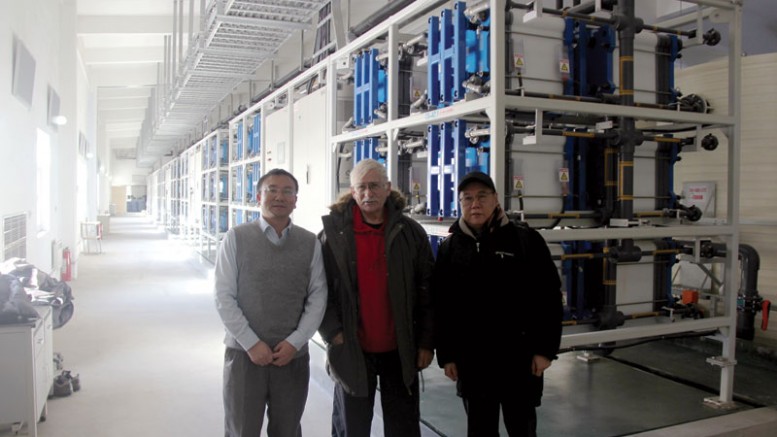
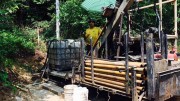
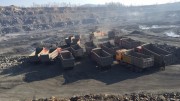
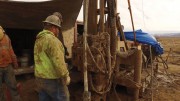
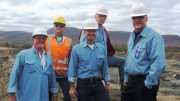
Only one problem, Sparton never held valid title or rights to any Vanadium project in China.
They signed an MOU with one Uranium Group that was deemed to be illegal and the money they had paid was refunded.
They paid RMB3M to a second group, who it turned out did not own the land that SRI optioned and even SRI found out, they kept drilling and releasing drill hole assays as though they had a valid project!
Now Mr Charles Ge (sx SRI director) and 10% holder of Vanspar Jiujiang in China, has managed to acquired a great VRB project which just happens to be the best thing to happen to Sparton since Mr. Barker joined the company.
Unfortunately, the SRI directors know this and seem to have planned everything to benefit personally from the acquisition at the expense of Sparton shareholders (see Stockhouse blogs). Looks like two SRI directors will take around 15% of the project for themselves and leave 1600 SRI shareholders with 15%. Talk about a conflict of interest!!!!
This acquisition by Vanspar (a 90% SRI subsidiary) needs to be voted on by Sparton shareholders as the current deal proposed by SRI directors stinks to high heaven
Congratulations to Mr Ge/Sparton for securing the Prudent Energy deal and my sincere commiserations to SRI shareholders whom it seems are in the process of being taken to the cleaners by their own directors.
I think that SRI directors must have broken a speed record in the time it took them to move the battery project out of Sparton/Vanspar so that only dust motes remain for SRI shareholders to grasp at.
lets tell it straight, Vanspar commissioned nothing, it was Professor Huang of Prudent (?) who commissioned the battery. This battery project had lain dormant since 2014 after which the China State Grid told Prudent either to complete it or remove it. As Prudent was bankrupt, Vanspar Jiujiang signed a deal to fund the completion of the installation and take a share of the payment, which they recently collected.
In addition, Vanspar Mining (BVI) has a deal to purchase Prudent , a formerly bankrupt company that in China, had frozen assets sealed in an office/warehouse facility in Beijing and owed around USD1.5 million in unpaid salaries.
The commissioning of the battery released funds (approx USD2.6 million) to Prudent who then paid out their creditors, unfroze the Prudent assets, took the Chinese company out of bankruptcy and resulted in Prudent signing a deal with Vanspar Mining Ltd. The residual cash from the payout went to Vanspar Jiujiang in China, and totaled around C$600k.
Based on the quality of the vanadium mining project in Jiang Xi Province, we too invested in Sparton only to later find out that Sparton held no legal claim or title to any of the ground. Of course, Sparton directors never disclosed this, and even though it was pointed out to them, their attitude was “why should we announce anything like this to the market”??
The Guojiaping Vanadium deposit overlies a uranium deposit, so no foreign ownership or interest is allowed. Chinese law is very clear on this, I guess SRI did not do their homework and again, just plain forgot to tell anyone.
The second deposit, Quangkeng, that again, Sparton drilled out, at the time, was not owned by the Optioner but by the local government. So with zero legal due diligence, Sparton for some reason, blew USD500k paying the wrong owner for an option when in effect they could have bought the project from the local government.
When we found out, we as investors could not exit fast enough and we watched as SRI continued to report assays from holes drilled on ground they did not own. However, they covered this by not mentioning where the drill results came from.
Looking at the current proposed deal to buy the Vanadium Battery company, maybe someone can explain why this acquisition did not go into Sparton directly? This looks like a really good project so why the need to get it on-sold when there are funds falling over themselves to invest in such green energy projects?
This could be a game changer for Sparton, so why are the directors so intent on moving this project out of the company and leaving nothing much behind for Sparton shareholders??